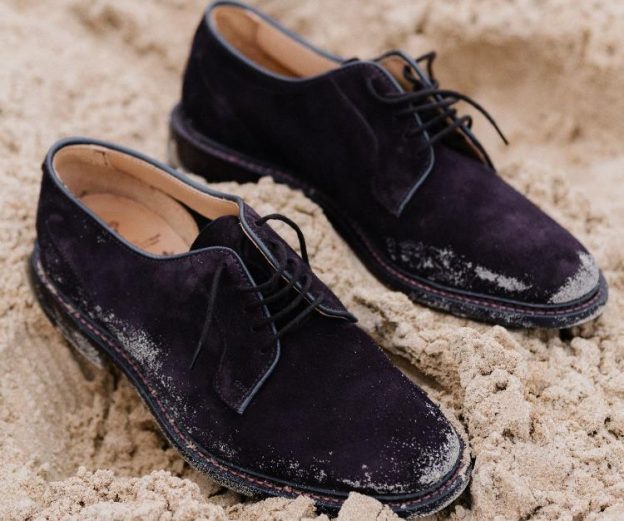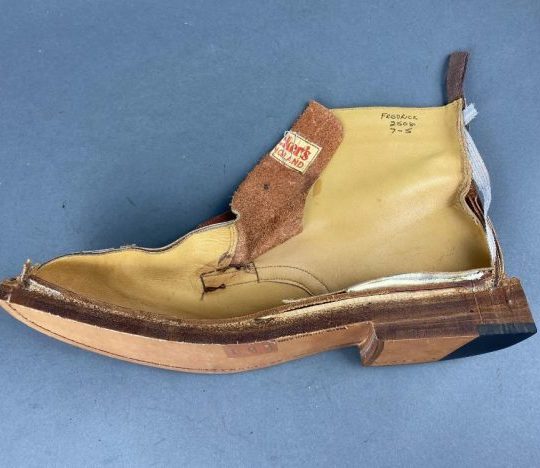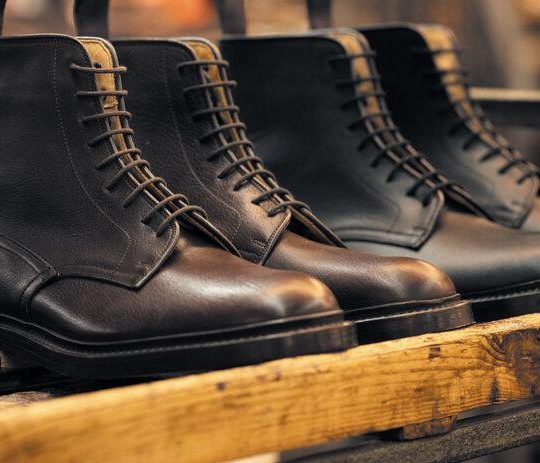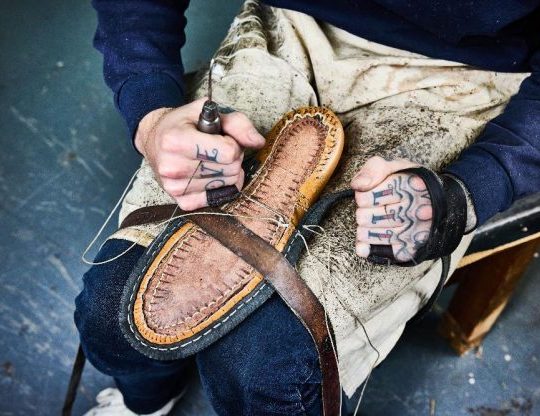The Derby differs from the Oxford in that it can be identified by its “open” lacing system, meaning that its eyelet tabs are stitched on top of the shoe’s vamp.
For people with a high instep – which is sometimes attributed to a high arch – the Derby can be preferable as it typically has a roomier instep. While this is of course still adjustable through lacing, it is popular with those for whom an Oxford isn’t quite right. The prevailing theory posits the Derby as an evolution of the Oxford, a response to those who found the Oxford uncomfortable for their high insteps.
Others theorize that we can thank Edward Smith-Stanley, the 14th Earl of Derby, for the cut. The Earl apparently was a man of generous proportions, and his large feet made it difficult for him to wear boots. In response, his bootmaker developed an open-laced boot that accommodated his feet better than closed-laced boots. Of course, it’s likely that the Oxford and Derby developed concurrently rather than one after the other—just as students at Oxford were shortening boots with open lacing, the Derby cut was being mentioned in books as early as 1862.
There is a third theory that goes back to European soldiers in the 1800s. During the Napoleonic wars, a Prussian army officer named Gebhard Leberecht von Blücher (explaining the term blucher, another name that is used to describe the Derby, especially in the United States) developed a boot with two leather flaps below the ankles that could be laced together, i.e., it used an open lacing system.
Just as with the Oxford, the multiple theories floating around suggest that the defining feature of the Derby shoe, its open lacing system, was being developed simultaneously by different people around Europe.
Just as with the Oxford, the multiple theories floating around suggest that the defining feature of the Derby shoe, its open lacing system, was being developed simultaneously by different people around Europe.









